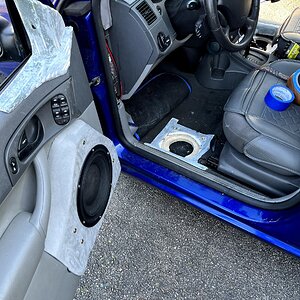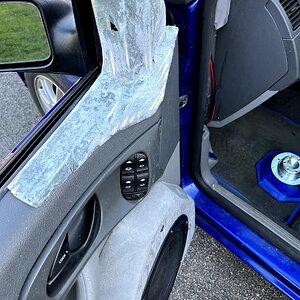Within reason more layers seems to = more power handling moreso than taller wind width. Bear in mind magnetic field strength is inverse squared so you gain exponentially the tighter you can make the gap so you really sacrifice a lot of motor force to fit those chunkier coils. As it stands my D1.4 coils and D2.8 coils are about 3/4" difference in wind width and I don't notice any difference in how well they hold heat. I definitely noticed the difference when I had experimented with Aluminum coils not holding up as well as the copper to long term heat and I most definitely notice the difference when using larger cones (motor/coils/all else equal). Obviously a 10" cone is going to get a lot more movement out of the same power as an 18" cone so I do run into heat issues faster with larger cone woofers.
I believe those pillar type neo designs aren't built around any special cooling, you just don't need that much material to create and focus the magnetic field in the gap so I suspect they're just a way to save weight and material. In fact all things being equal I wouldn't be surprised if the huge mass of ceramic and steel does as much or more to keep heat off the coil than it being open to the air.
Not sure about pole vents. 4HP had a rather large one as did the 2002 Sig, 2005 used a much smaller pole vent, sadly I didn't get an explanation on why that changed. As you say, many of the great Fi subs had solid pole as did the respectable RE MT and some of the other early top SPL subs, and for what it's worth we rarely or never see it on midrange, full range, or PA drivers. Whatever it is, I have to suspect there's more behind it than cooling
Side by side, across all sizes the coils I use seem to hold more or less the same heat in neo or ceramic motors, any cone size, and even in smaller motors. There's some differences of what gets stinky how quick off the same amp or whatever but broken down to percentage difference in what I'd call "thermal power handling" it's not all that much and certainly should be inaudible. In fact, by the time they're getting smelly you're already well past the point where they're outside their power handling and it's just a matter of time before they fail; from that point it doesn't take much by way of increasing power to dramatically shorten the time until failure.
I would say that when rating power handling you can only about guess as far as mechanical limits (unless things are way over-built) but thermally we cannot in good faith start adding what if's such as what if the person is playing at tuning and the cone is barely moving, what if they're playing 60hz and the cone is barely moving, etc. Subwoofer should be able to play any tone from 20-120hz (at least) when in the correct box, within rated power without failure period.
To be specific, if you say a woofer can take 1000W you should be able to put it in recommended-ish box, clamp a 1000W 50hz sine wave into it in the morning, and when you get back from work it's still playing. This is more or less how Jacob rates. This way you know if a sub comes back broken and it's not an obvious manufacturer defect you KNOW it was abused. It also gives things a reputation to "handle" way more power when someone slaps a 2K amp on their 1200W sub and can pretty much bang any CD they like from start to finish without breaking anything.


